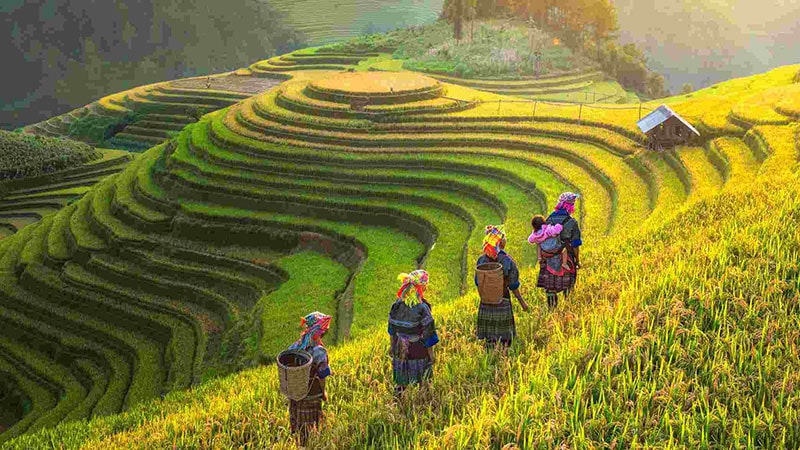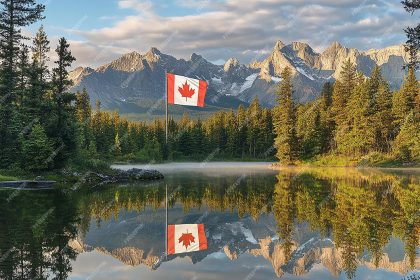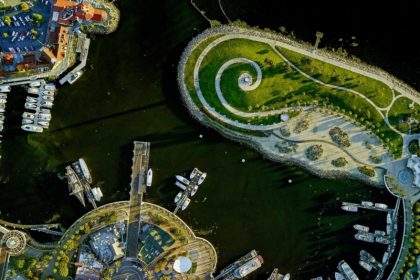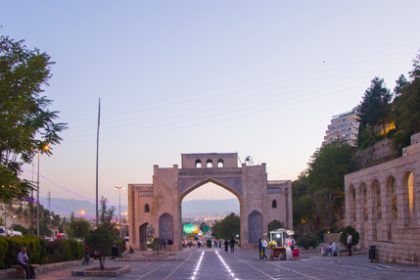Where is Sapa? A common question among international visitors who travel to Vietnam for the first time. We have answered this question below. Sapa’s area is located in a valley surrounded by magnificent rice terraces and with natural beauty and cultural diversity, ethnicity is an ideal option for those interested in pristine destinations. The inhabitants of the area have been engaged in agriculture for centuries and have created a spectacular and magical background. Follow us on and get to know this pristine and less known destination in Vietnam.
Introduction to Sapa – Vietnam
Where is Sapa? Sapa is a famous tourist destination in northern Vietnam and is known worldwide for pristine landscapes. It is located in Lao Kai province in the northwestern region of Vietnam and is the home of Pharanxipang “as the highest peak in Vietnam (often known as” Hinduchin Roof “). The area is surrounded by mountainous lands with mountains, high peaks and challenging landscapes.
Sapa is one of the most popular tourist attractions that has attracted many domestic and international visitors. Because of its natural beauty, the city has lush forests, white clouds and unique scenery. In addition, Sapa is known for its cultural diversity, which is the residence of several ethnic minorities. Therefore, Sapa visitors on the Vietnam Tour have the opportunity to experience its unique culture.
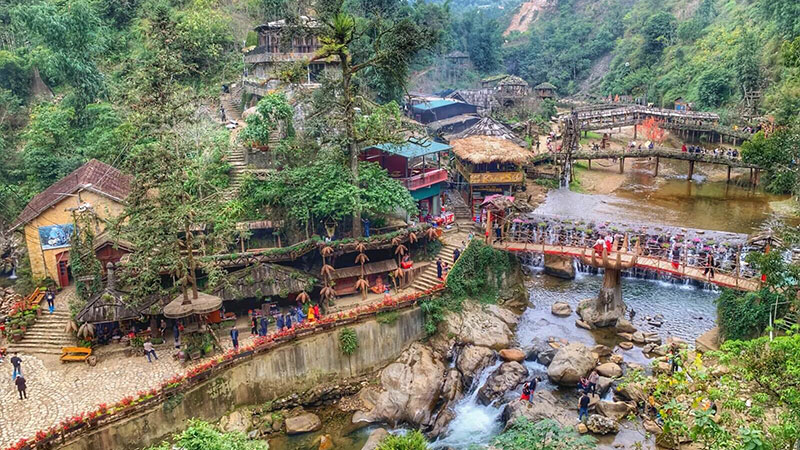
The roots of the name “Sapa”
Where is Sapa’s question before answering the question? Let’s look at the name of Sapa’s location. The name “SA” is derived from Mandarin, where it is pronounced as “sa pả” or “sap” and is translated into “cat”. In the past, the area had only one sandy beach that the local community usually used to set up the market. The term “sa pả” can be interpreted as “cats”. In addition, “SA” can also translate the Chinese word “sha” meaning “cat”. The Westerners were pronounced it without tone as “SAPA” and wrote it in French as “Cha foot”.
Subsequently, “Cha foot” was accepted as a Vietnamese word and eventually became “Sapa”. The city of the foot is also known for its dark red streams called “Hùng Hồ” meaning “suối”.
Read more: Vietnam Language + Vietnamese alphabet
Where is Sapa?
Where is Sapa in Vietnam? Sapa is a high area in Lao Kai province located northwestern Vietnam. To date, Sapa is an attractive destination for tourists, especially foreign visitors. The city of Sa has been located 2 meters above sea level, 2 kilometers from Lao Kai and 2 km from the capital of Hanoi.
You can reach SAPA from the main road from the city of Lào Cai, but there is another route, the 3D National Road, which connects from the Bình Lư Commune to Lai Châu and facilitates comfortable travel.
Sapa is an approximate area of 1.5 square kilometers, mainly home to ethnic groups including Tai, Gia, Za Fu, Homong, Dao, Haya and Hua. This area has many fans not only because of the stunning natural landscapes, but also because of the creativity of its people to live alongside the hills and the greenery of forests that create a coordinated and poetic image.
The presence of floating clouds that have dipped the city in the fog. He has created a dreamy view in Sapa. With its unique climate and a variety of colors, this area is an exceptional destination for those who love to explore and enjoy the beauties of nature.
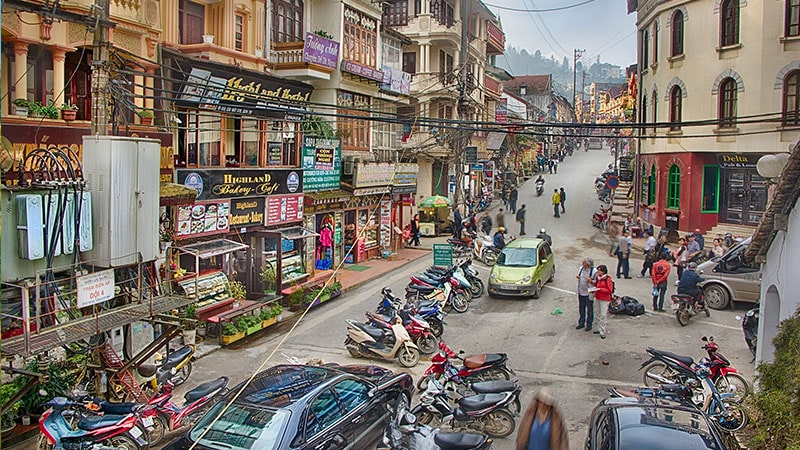
How to travel to Sapa?
Now that we know where Sapa is, you need to know more about how to travel to this area. Tourists usually go to Hanoi New Bai Airport and then choose one of the different freight options to travel to Sapa. These options are the following:
Traveling with a coach (Coach) / Where is Sapa
The bus or migration is the most popular shipping device to Sapa, which many passengers choose because of safety and time. There is a bus service to go to different areas of Sapa, allowing travelers to choose a reasonable price.
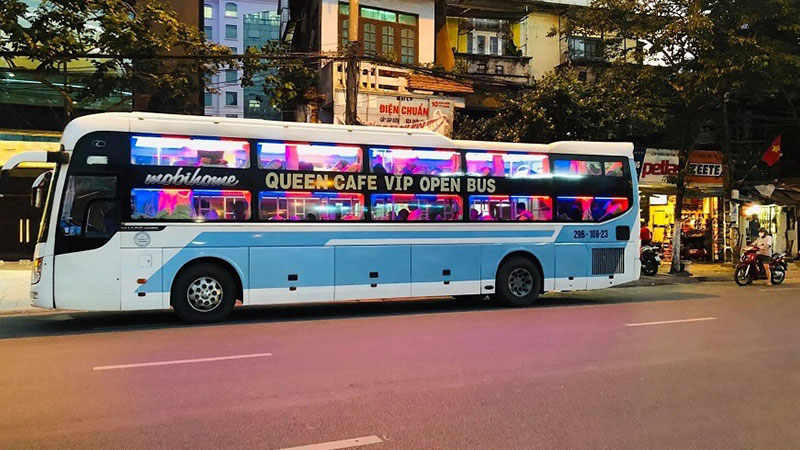
Traveling with a motorcycle or personal car
Traveling on a motorcycle or personal car allows tourists to be more independent and flexible. However, this type of transport is not really suitable for foreign tourists. Hanoi to Sapa is very challenging, so driving will not be safe for tourists. If tourists are accustomed to driving long distances and be able to cope with rugged lands, they can choose this way.
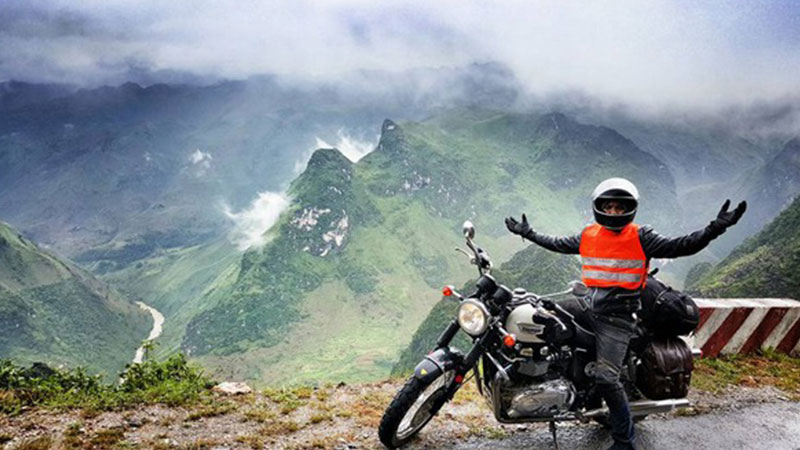
Travel by train
Using a train to Sapa is also a popular choice. If you travel by train, you move from the Hanoi station and reach the Lao Cai station. The following is a taxi to the city of Lao CAI.
Read more: God’s hand bridge in Vietnam Visit the Vietnam Golden Bridge
Important information you need to know when visiting Sapa
Passengers should know the basic weather information and other details of the area in addition to Sapa’s response.
Where is the weather in Sapa / Sapa
Sapa’s climate is unique because of its geographical conditions. The air temperature in the city varies due to increased altitude and is therefore cooler than other provinces in the northern region. The average temperature in Sapa is about 2 degrees Celsius during the year.
Sapa’s weather in the spring
Spring is from February to May. In general, spring in Sapa begins later than other provinces. At the beginning of the spring, the air temperature in Sapa is typically between 2 and 2 degrees Celsius. During the spring, locals drive water to the staircase farms and create a great view. This season is also when the peach and plum blossoms multiply the beauty of the Sapa hills.
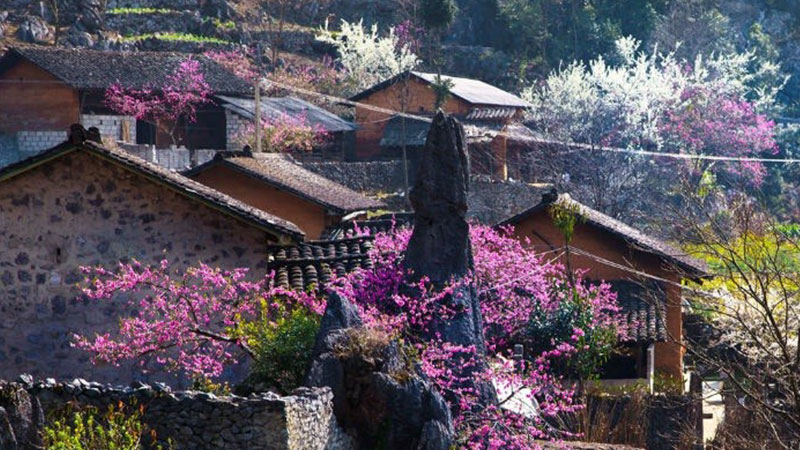
Sapa’s weather in the summer
Below is Sapa where we look at the climate of this area in the summer. Summer in Sapa experiences a unique climate compared to other areas of Vietnam. Due to the cool, refreshing climate, which is heavily contradictory in the summer in the plains and coastal provinces, summer is an ideal time to visit Sapa. From May to early August, the air temperature in Sapa is very pleasant and varies between 2 and 2 degrees Celsius during the day. This creates ideal conditions for outdoor activity in the mountainous area. At night, the air temperature drops between 2 and 2 degrees Celsius and excellent air for rest and recharge after a day.
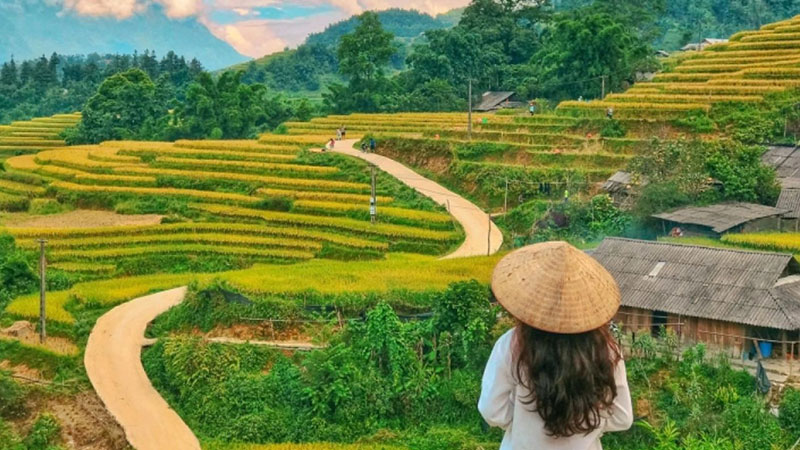
Sapa’s weather in the fall
Autumn in Sapa begins in late August until the end of November. During this period, the temperature in Sapa varies from 2 to 5 degrees Celsius and provides a great space for outdoor activity. In the early autumn season, moisture is relatively high and the rainfall peaked in the year. If you plan to visit Sapa at the beginning of the fall, you should be careful about the weather forecast. Autumn is also a chapter where rice fields reached SAPA and turn staircase into a bright golden color. In addition, tourists can participate in local cultural activities and become familiar with the daily lives of ethnic minorities in the region.
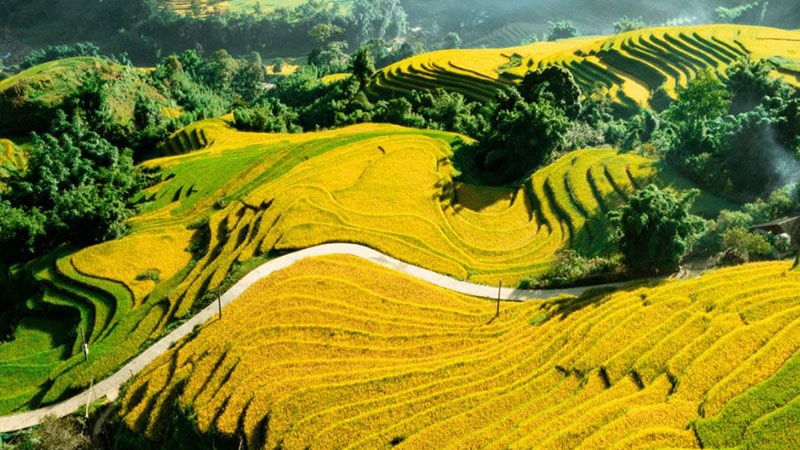
Sapa’s weather in the winter
Winter weather in Sapa is typically very cold and humid. The temperature is often below 2 degrees Celsius and sometimes below 2 degrees Celsius. At this time, Sapa may also experience snowfall.
The wet climate and the thick fog are the common features of the winter season in Sapa that attract many tourists to the experience of this cold atmosphere. However, in winter, Sapa also has beautiful sunny days that provide ideal conditions for surfing this mountainous area.
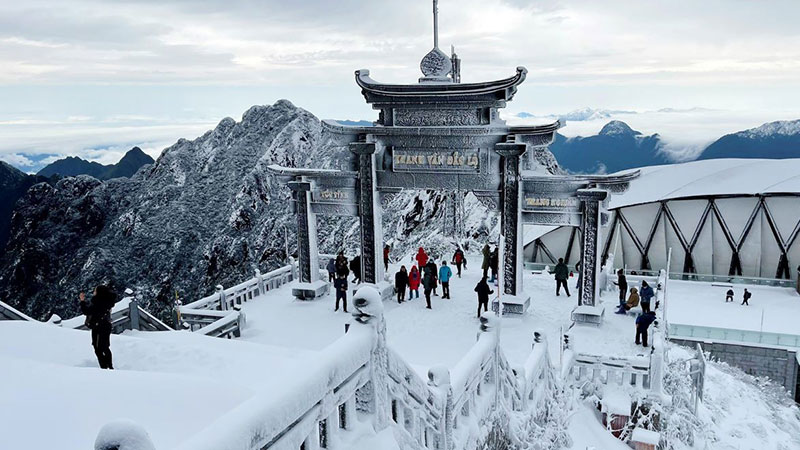
What is the best month to visit Sapa?
The best time to visit Sapa is from March to May or from September to November. During these months, Sapa has a temperate climate and a pleasant atmosphere with warm sunlight and cool weather in the evening. You can also enjoy the landscape of flowering valleys and lush fields. This is a great opportunity to experience traveling to a pristine destination in Vietnam.
Read more: Travel Guide to Vietnam
Where is the cultural diversity in Sapa / Sapa
Where are the most fascinating part of Sapa’s story. Sapa is famous not only for its stunning natural landscapes, but also for the unique cultural aspects of many of his ethnic minorities. Visitors have the opportunity to discover the distinctive cultural characteristics of ethnic groups such as H’mong, DAO, Tay and many more.
One of the highlights of the cultural market in Sapa is the local market as a crowded center for buying, selling and trading goods as well as a place to see indigenous people. The local market is always crowded and offers an exciting experience for foreign visitors. The market is not only a place to buy, but also an opportunity to learn about the culture, customs and ethnic minorities in the region.
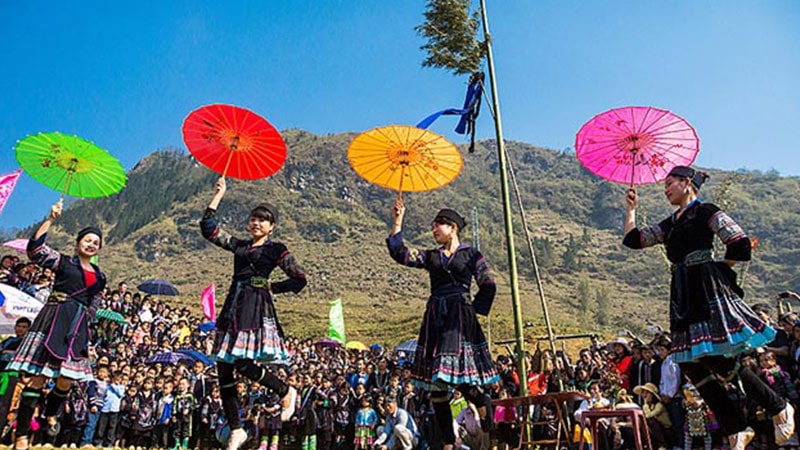
You can do things in Sapa
Here’s where Sapa is about the attractions and things you can do in this city:
Where’s the trap / Sapa trap
A 2 -kilometer -long trap trip will bring you to the summit of Mount Fainipan in just 5 minutes to 2 meters high. Once you reach the top of the summit, you can visit the Betheka Collection and the “Hinduch Roof”.
Visit the ethnic minority market
Where in the previous paragraphs, Sapa’s content was talked about the fascinating markets in the region. Every Sunday, the market is held in traditional costumes with hundreds of merchants from the Dazao, Han, Za Fang, Tai and Thai tribes. So you can experience a great purchase.
Go to walk in the hills
SAPA offers some of Vietnam’s best walks. Be ready to surf the rice terraces, bathing in waterfalls, and the experience of ethnic culture.
Bike / Sapa where
Cycling in the mountains is a great way to get out and travel to Sapa’s less ears. The Vietnam Mountain Marathon attracts about 2 participants annually, traveling the buffalo roads from 1 to 2 kilometers.
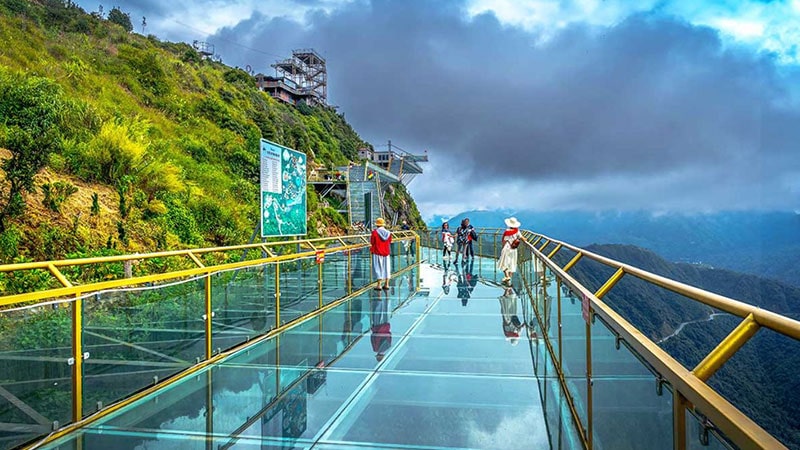
Final speech
Sapa is a fascinating scenery, rich staircase and cultural paddy fields, a paradise for nature lovers and adventure trips. Visiting the area will be a memorable experience that is linked to the natural beauty and hospitality of local people. Contact our partners in the foreign tours section to book Vietnam and travel to Sapa.
Copying the content of the Vanak Star Airlines agency is solely for the source.
RCO NEWS




